-
 bitcoin
bitcoin $123963.239194 USD
1.37% -
 ethereum
ethereum $4529.082464 USD
1.07% -
 xrp
xrp $2.983640 USD
0.71% -
 tether
tether $1.000287 USD
0.02% -
 bnb
bnb $1179.874393 USD
2.99% -
 solana
solana $230.633678 USD
1.55% -
 usd-coin
usd-coin $0.999835 USD
0.03% -
 dogecoin
dogecoin $0.254240 USD
1.34% -
 tron
tron $0.341176 USD
0.15% -
 cardano
cardano $0.842285 USD
0.52% -
 hyperliquid
hyperliquid $48.537896 USD
-0.86% -
 chainlink
chainlink $21.863092 USD
-0.84% -
 ethena-usde
ethena-usde $0.999743 USD
-0.07% -
 sui
sui $3.579561 USD
-0.18% -
 stellar
stellar $0.403418 USD
2.67%
What is DeFi's slippage?
Slippage in DeFi (decentralized finance) occurs when the actual price of a transaction differs from the anticipated price due to rapid price fluctuations between the initiation and execution of the trade.
Feb 15, 2025 at 07:42 pm
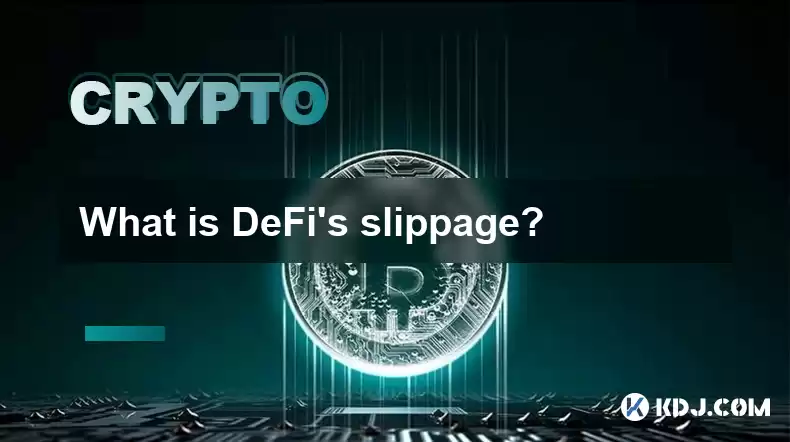
- Definitions of slippage
- Causes of slippage
- Impact of slippage
- Mitigating slippage
What is DeFi's Slippage?
Slippage is the difference between the expected price of a transaction and the actual price executed. In decentralized finance (DeFi), this discrepancy arises when the price of an asset changes rapidly between the initiation and execution of a transaction.
Causes of Slippage:- Market volatility: Rapid price fluctuations in the underlying asset can cause significant slippage.
- Liquidity: The availability of liquidity within the exchange or platform influences slippage. Low liquidity can lead to larger price swings and increased slippage.
- Transaction timing: Slippage is more likely to occur during periods of high trading volume or when the market is experiencing significant volatility.
- Transaction size: The size of a transaction can impact slippage. Large trades may deplete liquidity and trigger larger price movements.
- Network congestion: Delays in executing transactions on the blockchain can result in price changes and increased slippage.
- Financial losses: Slippage can lead to unfavorable transaction prices, resulting in potential losses for traders or investors.
- Inefficient trades: Inaccurate trade executions due to slippage can interfere with trading strategies and reduce overall profitability.
- Missed opportunities: Slippage can prevent traders from executing trades at desired prices, potentially causing missed opportunities for gains.
- Monitor market conditions: Stay informed about price volatility and potential liquidity issues to anticipate potential slippage.
- Choose platforms with high liquidity: Utilize DEXs or liquidity pools with ample liquidity to minimize price swings and reduce slippage.
- Place limit orders: Set limit orders to specify the maximum or minimum price at which you are willing to execute a trade, limiting the potential for slippage.
- Reduce transaction size: Break large trades into smaller chunks to reduce the impact of price changes on a single transaction.
- Time transactions strategically: Avoid trading during peak trading hours or periods of high volatility when slippage is more likely to occur.
Q: What is an acceptable level of slippage?A: The acceptable level of slippage depends on the trading strategy, market conditions, and individual risk tolerance. Generally, slippage should be minimized as much as possible to avoid financial losses.
Q: Can slippage be completely eliminated?A: While slippage cannot be completely eliminated, it can be mitigated by employing the strategies mentioned above. However, unforeseen market fluctuations or technical issues may still result in some degree of slippage.
Q: What are the different types of slippage?A: The two main types of slippage are:
* Positive slippage: When the executed price is better than the expected price.
* Negative slippage: When the executed price is worse than the expected price.Disclaimer:info@kdj.com
The information provided is not trading advice. kdj.com does not assume any responsibility for any investments made based on the information provided in this article. Cryptocurrencies are highly volatile and it is highly recommended that you invest with caution after thorough research!
If you believe that the content used on this website infringes your copyright, please contact us immediately (info@kdj.com) and we will delete it promptly.
- BlockDAG, DOGE, HYPE Sponsorship: Crypto Trends Shaping 2025
- 2025-10-01 00:25:13
- Deutsche Börse and Circle: A StableCoin Adoption Powerhouse in Europe
- 2025-10-01 00:25:13
- BlockDAG's Presale Buzz: Is It the Crypto to Watch in October 2025?
- 2025-10-01 00:30:13
- Bitcoin, Crypto, and IQ: When Genius Meets Digital Gold?
- 2025-10-01 00:30:13
- Stablecoins, American Innovation, and Wallet Tokens: The Next Frontier
- 2025-10-01 00:35:12
- NBU, Coins, and Crypto in Ukraine: A New Yorker's Take
- 2025-10-01 00:45:14
Related knowledge

How to track DeFi activity on a block explorer
Sep 04,2025 at 05:36pm
Bitcoin's Role in Decentralized Finance1. Bitcoin remains the cornerstone of the cryptocurrency ecosystem, serving as both a store of value and a benc...
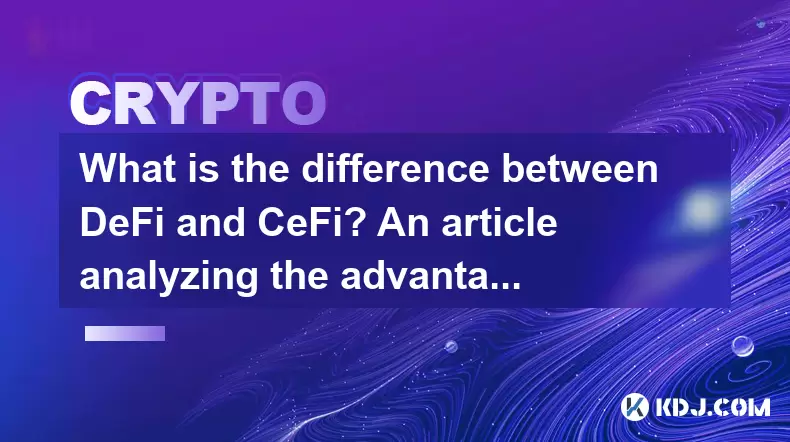
What is the difference between DeFi and CeFi? An article analyzing the advantages and disadvantages of both
Jun 13,2025 at 03:57am
Understanding the Foundations of DeFi and CeFiTo fully grasp the difference between DeFi (Decentralized Finance) and CeFi (Centralized Finance), it’s ...
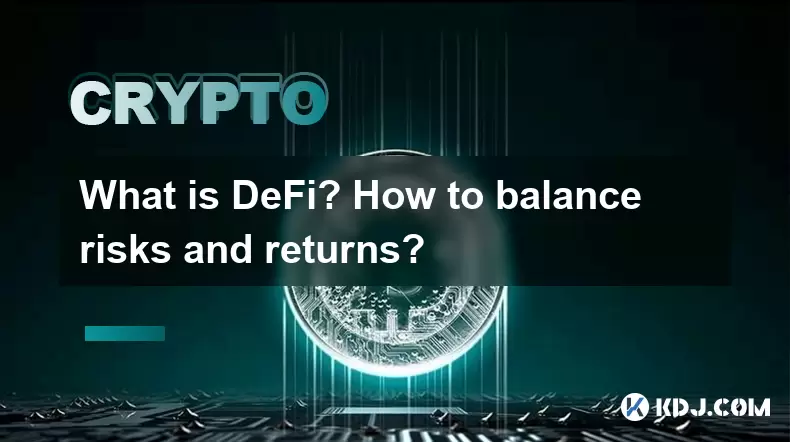
What is DeFi? How to balance risks and returns?
May 31,2025 at 12:22pm
What is DeFi? How to Balance Risks and Returns? Decentralized Finance, commonly known as DeFi, represents a revolutionary shift in the financial ecosy...
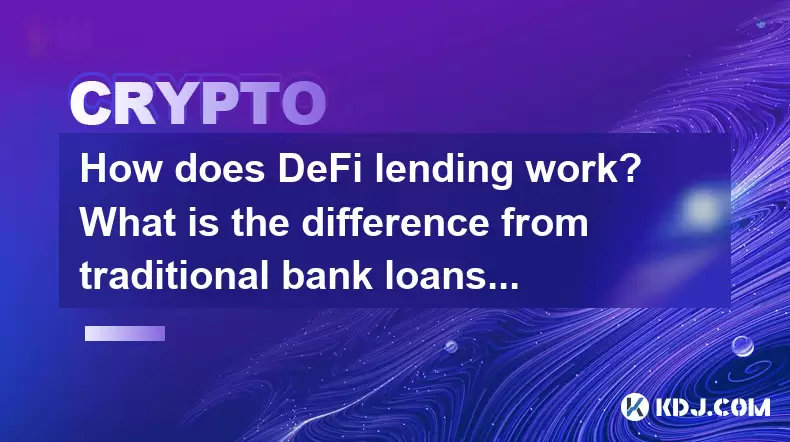
How does DeFi lending work? What is the difference from traditional bank loans?
May 29,2025 at 05:36pm
Introduction to DeFi LendingDeFi lending, or decentralized finance lending, represents a revolutionary shift in the way borrowing and lending are cond...
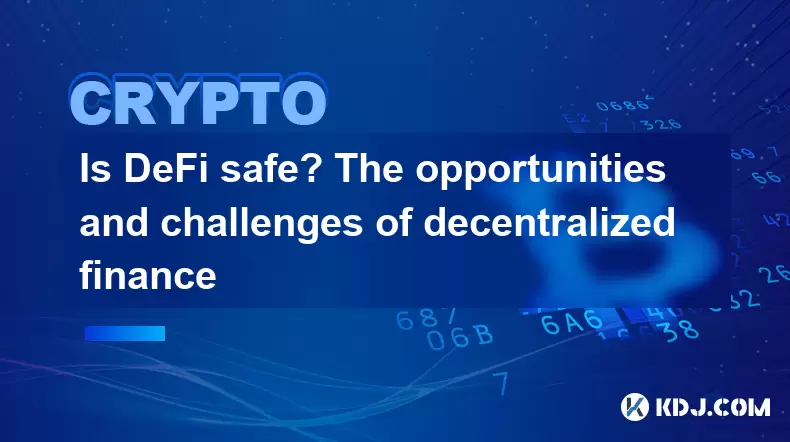
Is DeFi safe? The opportunities and challenges of decentralized finance
May 27,2025 at 02:28pm
Decentralized Finance, commonly known as DeFi, has revolutionized the financial landscape by offering a range of financial services without the need f...
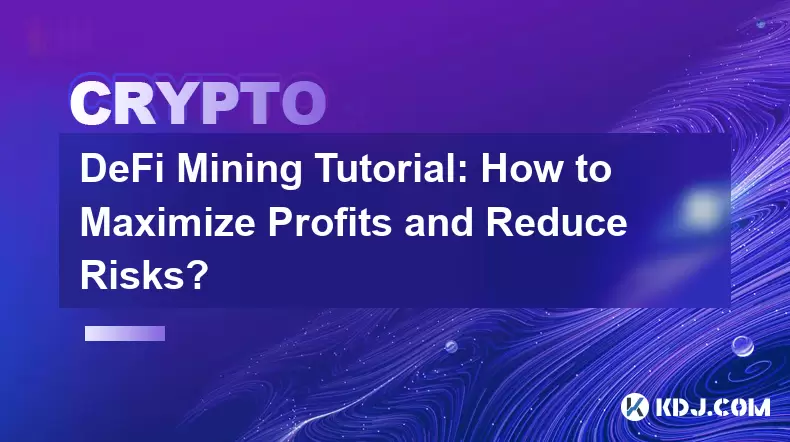
DeFi Mining Tutorial: How to Maximize Profits and Reduce Risks?
May 27,2025 at 07:42am
DeFi, or Decentralized Finance, has opened up a new world of opportunities for crypto enthusiasts looking to maximize their profits through various mi...

How to track DeFi activity on a block explorer
Sep 04,2025 at 05:36pm
Bitcoin's Role in Decentralized Finance1. Bitcoin remains the cornerstone of the cryptocurrency ecosystem, serving as both a store of value and a benc...

What is the difference between DeFi and CeFi? An article analyzing the advantages and disadvantages of both
Jun 13,2025 at 03:57am
Understanding the Foundations of DeFi and CeFiTo fully grasp the difference between DeFi (Decentralized Finance) and CeFi (Centralized Finance), it’s ...

What is DeFi? How to balance risks and returns?
May 31,2025 at 12:22pm
What is DeFi? How to Balance Risks and Returns? Decentralized Finance, commonly known as DeFi, represents a revolutionary shift in the financial ecosy...

How does DeFi lending work? What is the difference from traditional bank loans?
May 29,2025 at 05:36pm
Introduction to DeFi LendingDeFi lending, or decentralized finance lending, represents a revolutionary shift in the way borrowing and lending are cond...

Is DeFi safe? The opportunities and challenges of decentralized finance
May 27,2025 at 02:28pm
Decentralized Finance, commonly known as DeFi, has revolutionized the financial landscape by offering a range of financial services without the need f...

DeFi Mining Tutorial: How to Maximize Profits and Reduce Risks?
May 27,2025 at 07:42am
DeFi, or Decentralized Finance, has opened up a new world of opportunities for crypto enthusiasts looking to maximize their profits through various mi...
See all articles










































































